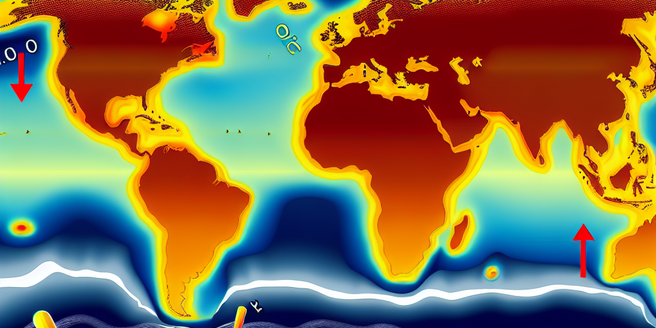
Understanding the concept of Sea Surface Temperatures
Sea surface temperatures (SSTs) crucially determine Earth’s climate conditions and shape weather patterns and marine environments. These temperatures act like a thermostat, regulating the climate both below and above the oceans and are subject to dramatic shifts due to factors like geographic latitude, time of year, and ocean currents. Monitoring these SSTs and understanding their changing patterns is critical, as their fluctuations can significantly impact global weather systems, for instance influencing phenomena like El Niño events, which have far-reaching effects on global weather patterns and marine life. Furthermore, these temperature shifts are not just key to understanding weather patterns, but also crucial for maintaining marine ecosystems, which depend on specific temperature ranges. Therefore, ongoing comprehension of SSTs is vital for preserving Earth’s environmental equilibrium and our understanding of the global climate system. In conclusion, the importance of SSTs is paramount; their variations, caused by latitude, seasonal changes, or ocean currents, affect our world, climate, weather patterns, and marine ecosystems’ health and functionality. Consequently, we must pay close attention to and understand SSTs to responsively manage Earth’s climate.
What is El Niño and how does it occur?
El Niño is an irregular but recurrent weather pattern caused by the unusual warming of the Pacific Ocean near the equator. These warming events are produced as a result of changes in wind and ocean currents. These patterns can occur every two to seven years, affecting global climate conditions. As a result, marine life also experiences significant changes due to the altered underwater ecosystem. This warming occurs when trade winds that typically push warm waters towards Indonesia weaken or even reverse direction. This results in a shift in rainfall, leading to floods in the Western Americas and droughts in Australia and Asia. El Niño events are undeniably linked to fluctuation in Sea Surface Temperatures.
The Relationship between El Niño and Sea Surface Temperatures
El Niño, the warm phase of the El Niño Southern Oscillation, is closely related to Sea Surface Temperatures (SST). Variations in SST have significance as it forms a mutual interaction with the atmosphere, creating a feedback loop. An increase in the SST may signal an impending El Niño event, enhancing atmospheric conditions and hence, leading to the formation of El Niño. Conversely, an existing El Niño event can further raise SSTs, indicating a tightly interwoven relationship within our global climate system. Comprehending this complex link is crucial for predicting climatic patterns and understanding the widespread impacts of such natural phenomena, thereby emphasizing the need to monitor and understand the interaction between SST and El Niño events.
Impacts of rising Sea Surface Temperatures linked to El Niño
Increased Sea Surface Temperatures (SSTs), linked with El Niño episodes, generate wide-ranging ecological and socio-economic impacts such as coral bleaching that disrupts marine ecosystems, shifts in fish populations that impact entire food webs, and extreme weather patterns affecting human activities and livelihoods. The heightened SSTs driven by El Niño can intensify these issues, threatening ocean vibrancy, climate stability, and economies reliant on stable fisheries or coral reef health. These increased sea temperatures can also escalate extreme weather events, leading to global disasters like severe droughts, floods, and destructive storms. Therefore, these SSTs are not just localized concerns, but global issues with extensive socio-economic and environmental effects. Hence, monitoring and understanding the rise in SSTs associated with El Niño events isn’t only an academic exercise, but a key aspect in modeling climate change, planning for extreme weather, managing marine resources and balancing socio-economic activities, as these temperatures have become significant indicators and drivers of our future.
Future Predictions: Sea Surface Temperatures and El Niño
Predictions indicate that there will be an increased occurrence and intensity of El Niño events with rising global temperatures; El Niño, characterized by unusually warm ocean temperatures in the Equatorial Pacific, greatly influences global weather patterns, posing a significant area of concern for environmental scientists. Additionally, it’s predicted that increasing Sea Surface Temperatures (SSTs) will significantly impact marine biodiversity, weather patterns, and the global climate, potentially causing significant changes to marine ecosystems, altering food chains, and leading to more severe weather events. As rising SSTs and El Niño events are closely interlinked, close and conscientious monitoring of these factors will assist global climate change mitigation and adaptation efforts; this monitoring in turn provides essential data for evidence-based policy-making, enhancing the capability to efficiently adapt to a changing climate. Hence, continuous research, monitoring, and global cooperation are of utmost importance in dealing with these climate phenomena and their potential impacts; the necessity of effective response strategies and unified action in dealing with climate change, especially concerning changes in El Niño events and rising SSTs, remains a high priority.
